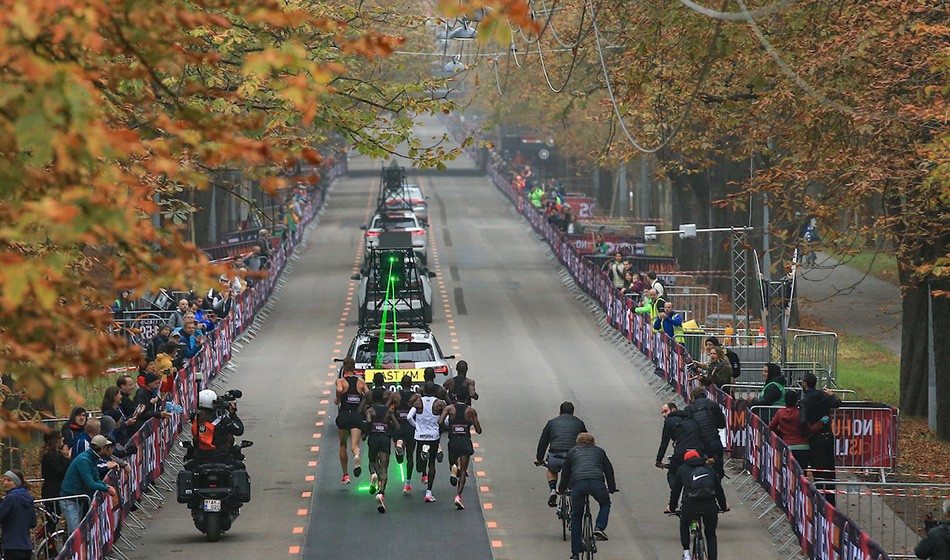
Athletes of the future are set to benefit from super-technology that could lead to sub-2hr marathons becoming commonplace
Eliud Kipchoge recently missed breaking two hours for the marathon in Berlin by 69 seconds but improvements in technology alone could see the barrier fall in future.
On race day the athletes of tomorrow could find themselves slipping into advanced materials that dynamically morph based on body temperature and weather conditions to create an optimal temperature for the wearer.
The pre-marathon and mid-race nutrition might involve 3D-printed meals that provide the precise mix of nutrients based on real-time data. This information would come from nanobots that live in the bloodstream, stomach and other organs to monitor health at molecular level.
Added to this, glasses or contact lenses will soon be able to display key metrics such as wind conditions or how an athlete’s body is faring, providing the knowledge of when to increase or decrease their pace.
These are some of the ideas of Frank Diana, a ‘futurist’ at the global technology leader Tata Consultancy Services (TCS), a company which sponsors the London and New York City marathons.
“If we pull back our lens even further and envision the future athlete, we can see the total re-imagination of sports,” he says.
“We are likely to experience a complete blurring of boundaries between technology and the athlete. Exoskeletons, implants, artificial body parts or human-machine convergence could alter the athlete and therefore the sports themselves.”
Kipchoge’s official world record is 2:01:09 although he ran 1:59:41 during an INEOS-supported time trial in Vienna in 2019 which involved a phalanx of pacemakers for almost the entire distance plus cyclists passing him drinks as he ran.
The question is, will the rules of the sport adapt quickly enough to allow – or ban – all of the above advances in technology?















 Phone: (800) 737. 6040
Phone: (800) 737. 6040 Fax: (800) 825 5558
Fax: (800) 825 5558 Website:
Website:  Email:
Email: 






